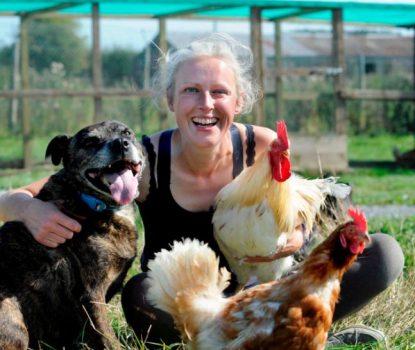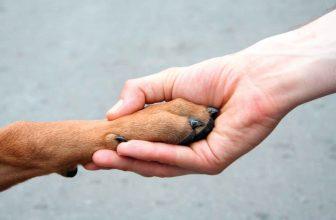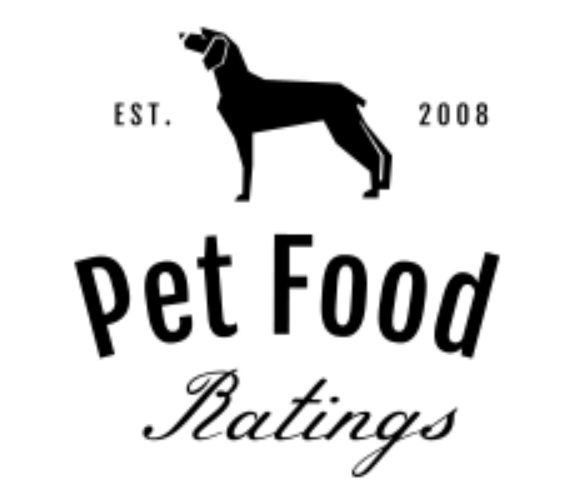Hospice care for dogs

A new approach towards the final goodbye
Dogs have one giant flaw: They don’t live near long enough.
Those of us who have shared our hearts and homes with a canine companion know that 5, 10 or even 20 years seem to go by like the blink of an eye. How can the dog we grew up with, raised our children with, or who outlived our spouse now be nearing the end of his life?
No pet guardian likes to think about the death of her dog. Unfortunately, it’s part of life — clichéd, but true. In years past, we would make that sad and final drive to the veterinarian’s office to have Fido put to sleep. In fact, it became almost impossible to find a dog guardian who had not been faced with that difficult scenario.
But today, things are different. For decades, hospice care in the human world has been commonplace. And now, it’s embraced by the canine world, too.
“Animals are part of the family,” said Juliet Sternberg, social worker and owner of Hope Veterinary Clinic in Brooklyn, N.Y. A full-service, holistic-based facility, Hope Veterinary Clinic encompasses everything, including acupuncture, dentistry, massage therapy and hospice care. “I’m absolutely convinced that people who go through the palliative care process [with their dogs] have a much better recovery than people who don’t.”
What is a hospice?
Defined, hospice is a type of care system or facility that focuses on providing comfort and support to patients nearing the end of their lives. It doesn’t prolong life or cure any disease; it is palliative care. Hospice care focuses on keeping pain to a minimum and letting the last months, weeks or days be as peaceful and dignified as possible. It’s about quality of life, not quantity. It’s about living the rest of the days as pain-free and humanely as possible. A team of qualified professionals, from doctors to counselors, work with the patient and family to provide this.
Hospice care also focuses on the loved ones left behind. Bereavement and counseling services are often part of hospice programs, which can take place in the patient’s home or in a medical-type facility.
Now, this same operating model is being used with dogs. Hospice care, which almost always takes place at the dog’s home, allows pet guardians to enjoy the time left with a pet, wrap their minds around the diagnosis and eventual outcome, and say goodbye. It’s about making the most of what is left, and then letting go.
“It’s an easier, peaceful, comfortable passing for the pet,” said Anthony J. Smith, DVM, of Rainbow Bridge Pet Services based in the San Francisco area of Hercules, Calif.
In fact, hospice care is as much for the guardian as it is for the dog.
“Part of hospice care, for me, is catering to the emotional needs of the pet owner,” said Dr. Georgina M. Kelly, board certified veterinary specialist in internal medicine with In Home Final Pet Care in Anaheim, Calif. “Helping the owner is as important as helping the pet.”
A hospice team is made up of the dog guardian, veterinarian and the veterinarian in charge of the hospice program. Social workers or psychologists associated with the hospice facility come into play, as do veterinary technicians, family members, friends and grief support groups.
“My job is to help the pet owner have as much information as possible to make a decision and feel comfortable with it,” said Kelly.
When you need hospice care
Hospice care becomes an option for a pet guardian when the dog is given a terminal diagnosis or is declining health-wise due to advanced age or a chronic condition. Other times, a dog may be diagnosed with a disease that could possibly be cured, but the cost and trauma of doing so are not things the guardian can or wishes to deal with. For example, if a guardian can’t afford a $10,000 chemotherapy protocol to possibly extend her dog’s life by a year or two, she may choose to make the last few months as pain-free and happy as possible, at home, with the help of a hospice team.
In all of these cases, the result is the same: The dog is dying. Deciding on a course of action after such a grave diagnosis in a sterile veterinary clinic often sends guardians reeling. But when there’s some space in between the diagnosis or prognosis and the eventual passing of the dog, guardians fare much better, say experts. “The shock factor is totally taken out of it at that point,” said Sternberg.
Guardians who embark on hospice care do so with the intention of giving their dogs some great last weeks or months, while giving themselves a chance to process the information and grief. They can keep their dogs at home with them, knowing they are comfortable and loved.
“I’m going to do everything I can to keep the pet comfortable and at home during the last [bit] of life,” said Kelly.
Sometimes, veterinarians will recommend the dog be put to sleep. Guardians who are not ready for that or who feel their dog still has some life left in him will often contact hospice services to explore their options. Kelly, who will work with her clients’ veterinarians, examines dogs and helps the guardians determine a course of action.
There is no set timeline or rule book for when an animal should be put to sleep. “It’s a case-by-case thing,” said Sternberg. Hospice allows guardians and the hospice team to determine when it’s right to say goodbye, and when everyone is ready to do so.
Why choose hospice care
Respecting life — and the end of life — is what hospice is about. It allows people to grasp what is happening and come to terms with decisions and inevitable events, all while letting the dog have peace in comfortable surroundings.
“It’s a very dignified way for a pet and pet owner to say goodbye,” said Kelly. “There’s no pain or suffering involved. It allows the owner to start getting used to the idea that this is really going to happen.”
Caring for a dying animal is one of the most intense, absorbing and rewarding journeys pet guardians can go through, say experts. “A lot of people find it quite life-changing,” said Sternberg. “Whatever it is about our need to care for someone else tends to come out during that experience.”
Guardians also don’t regret their decision to put their dog to sleep; they have confidence that they made the best of the time left, did all they could to provide a quality life for their dogs, and made all the best decisions possible, explained hospice professionals. “We try to figure out what’s best for all,” said Sternberg.
Hospice care is relatively simple. It involves the use of pain medications to keep the dog comfortable, fluids for hydration, and possibly other services such as:
- Nutritional assessment and recommendations (perhaps a feeding tube or other feeding assistance, too).
- Steroids to decrease inflammation and increase appetite.
- Acupuncture, massage therapy and acupressure.
- Subcutaneous fluids and anti-nausea medication. These are done at home, most often by the guardian.
The amount of intervention can be simple or complex, depending on the plan. For example, Kelly described how some procedures, such as morphine-like injections or IV fluids, can be done by a vet tech who visits the home. Or maybe around-the-clock pain pills are all it takes to make the dog comfortable. It varies.
Smith of Rainbow Bridge Pet Services and Sternberg of Hope Veterinary Clinic both described how they educate their clients on how to care for their pets. In addition, they teach clients how to be on the lookout for changes in the dog’s condition that might signify it’s time to discuss euthanasia.
For example, is the animal still in pain despite medication? Has the quality of life diminished? Smith teaches his clients how to be aware of these changes and evaluate what they mean in the big picture. He encourages guardians to complete a questionnaire frequently (weekly or sometimes every few days) to help them objectively rate their dogs’ condition so that they make educated choices regarding the next steps.
“It gives them a tool to monitor the trends and what’s happening with their pets,” he said. “People sometimes know these things, but they don’t put them in a holistic picture of how their pets are doing.”
In fact, a great deal of hospice care is about educating and supporting the guardians, as well as teaching them to identify what is best for the dog, not just themselves.
Make plans
At times, a devastating health diagnosis takes guardians by surprise, and they’re left juggling emotions, shock and major decisions. But for those who have aging dogs, the time to make choices is now, say experts. Figure out if hospice is the right choice, contact a local hospice care provider, and learn what is offered. That way, when the time comes to start setting a plan in motion, there is already one firmly established.
Don’t delay or flop around in denial. Many times, quick delivery of pain medications or other palliative care procedures can not only make the dog more comfortable, but it can also make the time left much more enjoyable. It may even buy the dog more time. If a dog doesn’t come into hospice care until he is very weak and suffering, it’s sometimes too late to create any serious quality of life time, said Smith.
“If [owners] investigated their options sooner, we could have investigated our options….and kept the pet going longer,” he said.
Time to say goodbye
At the end of every hospice road is a goodbye. Dogs in this chapter of their lives do not recover. They may last for a few days or a few months; very few stay in hospice care for years. In every case, there is an end.
Nearly all hospice clients have their dogs put to sleep in their homes instead of taking them into a veterinary clinic. The benefits are numerous, say experts. For one, guardians are not forced to confront happy, perky puppies and their loving guardians in the waiting room. Those clients are not there for end-of-life issues and will be leaving with their dogs.
Also, most veterinary hospitals don’t have any cozy-type rooms to euthanize pets; this means that the procedure is done in a cold exam room or on a sterile table. Many dogs are afraid and stressed out at the vet’s office, even when they’re not in pain. Having this be their last place on earth is not a comforting thought for either guardian or pet.
“It’s not a peaceful and comfortable experience,” said Smith. “It’s a hugely different experience doing it at home.” Added Sternberg: “It’s the last experience you’re going to have. The last thing you want is a sterile hospital environment.”
Some guardians who euthanize their pets at the vet’s office often report higher amounts of grief, regret and stress. “It’s not conducive to the healing process,” said Kelly.
While some family veterinarians will come to the house to euthanize a pet, very few cater to the emotional needs of the guardian.
“Part of hospice care for me is [doing that],” said Kelly, who notes that she’s there for her clients 24-7. “We’re really looking after the comfort of the pet, because it is the end, and we take care of the pet owners’ needs and emotional support.”
At the end of the hospice journey, many guardians feel at peace, grateful for the comfortable way their dog died, and confident in their decisions leading up to that event. It opens the door for the healing process to start, said Kelly.
Thinking of a pet’s death much less planning for it is difficult to say the least. Although having a plan in place when the time comes may not necessarily save a dog’s life, it just might give him more quality time with his family. In the long run, that precious time is what really matters.







